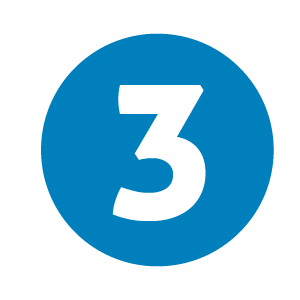When clients are ‘in the swirl’ and depleted, how do we reconnect optimism and purpose to reignite the spark of bigger vision?
Coaching Optimism & Purpose: 3 Profound Questions to Fuel Energy for a Better Future 🌱
Even people with a compelling sense of purpose have days where we flag. Especially in a time when the world seems extra chaotic, it’s hard to keep a clear vision and maintain the energy to walk toward it. Let’s call that ‘being in the swirl.’
As coaches, we walk with our clients toward their goals. While we can help clients with practical or short-term goals, the most powerful coaching occurs when the goals are of deep and long-term importance. In the swirl, however, clients are likely to:
- Focus on short-term aspirations because the long-term feels too hard
- Self-limit or edit themselves because they doubt they can move forward
- Circle around despair or hopelessness because it seems impossible to find a path
- Withdraw or disconnect because these difficult feelings often trigger patterns of isolation
So in the swirl, even when we use the super-effective 3-D contracting process, it’s unlikely a client can connect with their own bigger vision.
How Optimism Helps Purpose
Remember that in the Six Seconds’ Model, optimism isn’t ‘just being positive.’ We can be realistic and confront the issues AND create new solutions. That kind of optimism is hard work, so we call the emotional intelligence competency Exercise Optimism.
Building from Martin Seligman’s work on learned optimism, we use three dimensions, or Three Bridges to optimism:
1. Time. While it might not be totally different, tomorrow will be a little different. This perspective helps us see ourselves growing and changing.
2. Isolation. While some aspects of life are problematic or even horrible, there are other parts. This helps us see potential pathways.
3.Effort. While we can’t fix or change everything, we also have not tried everything (yet). This can help us find energy to try new options.
These three dimensions also connect to purpose:
Time: It’s about focusing on the future.
Isolation: It’s about taking action in small ways that add up to something bigger.
Effort: It’s about contribution, putting our energy toward something beyond ourselves.
This article is from the 🌱 Emotional Intelligence Coach Newsletter
Click here & choose the newsletters that will help you practice and grow emotional intelligence
Three Profound Questions to Exercise Optimism on Purpose
When a client is (or we are) in the swirl, here are three questions to explore:

Emotions as Energy
In the swirl, we have a lot of big feelings. They can be overwhelming, and lead people to shut them off – in this space, I’ve had a sense, “If I touch these emotions, it will be like stepping in a black hole I can’t get out of.” Safety will be key here, and your supportive, open, engaged coaching presence is a must-have.
This might call for a re-thinking about feelings as resources. If all feelings are actually signals of opportunity or threat, big feelings are messages about big threats and big opportunities – in other words, about what matters.
So a question to explore:
If these feelings are messages from you, for you, about what’s important: what are they calling you to focus on?

Support for Growth
Research on stress shows us that stress is actually a message: Our perceived challenges are bigger than our perceived resources. As previously mentioned, in the swirl, people will often retract or withdraw from others. This, in turn, means less resources – less support. So we get into a self-fulfilling spiral of doom.
Clients may need to access support networks, or strengthen them. They may need more help than a coach. They may need allies to step into bigger challenges.
So a question to explore:
What people, places or roles are bringing out the best of you?

Contributing to the Future
While people can get meaning from many aspects of work and life, a hallmark of purpose is service to something bigger than you. Inherent in purpose is a connection beyond self.
You know the famous Gandhi quote about “be the change”? It’s from his writing about Satyagraha – the force of love, here’s a simple explanation. A key point is we are ALWAYS adding to the world, we just might not be adding intentionally. So we have an opportunity in every moment of every day to make tiny contributions.
So a question to explore:
If you are adding a little bit to the world every day whether you mean to or not… What do you want to add to the world?
Whether you’re a professional coach, or contemplating earning certification as a professional emotional intelligence coach*, or you’re someone who uses coaching techniques to support others: of course these questions apply to us first.
* Did you know? In addition to top-level accreditation from the International Coaching Federation, the EQ Coach Certification is one of a handful of coaching certifications in North America that also provides master’s level credit? You’ll earn almost ⅓ of your MBA or MA in this program.
One of my foundational beliefs is that all change starts on the inside. As coaches, leaders, changemakers… if we want to bring more optimism and purpose to the world, it’s our opportunity exercise these essential tools ourselves. Remember:
Time: What’s the future you’re walking toward?
Isolation: What’s the small practice for today?
Effort: You’re adding your energy to the world – to what do you want to give?
How does this land for you as a coach? Please share a comment below!
And, if you have questions you’d like me to explore in a future 🌱 EQ Coaching newsletter and/or video, please post in the comments, or feel free to reach out to me via our contact form.
… and don’t forget to Click here to subscribe to the EQ Coach Newsletter.
For more on EQ and Coaching 🌱, I recommend:
Coaching People in Challenges
- Knowing Isn’t Coaching: Three Emotional Intelligence Tools for Professional Coaches - April 3, 2024
- Coaching Down the Escalator: 3 Emotional Intelligence Tips forCoaches to Reduce Volatility & De-escalate Conflict in a Polarized World - March 6, 2024
- Dr. Daniel Goleman Explains the History of Emotional Intelligence - February 29, 2024


Excellent piece! The more I learn, the more I see the overlap between ESL/EQ and lesson planning, and that’s what I love.